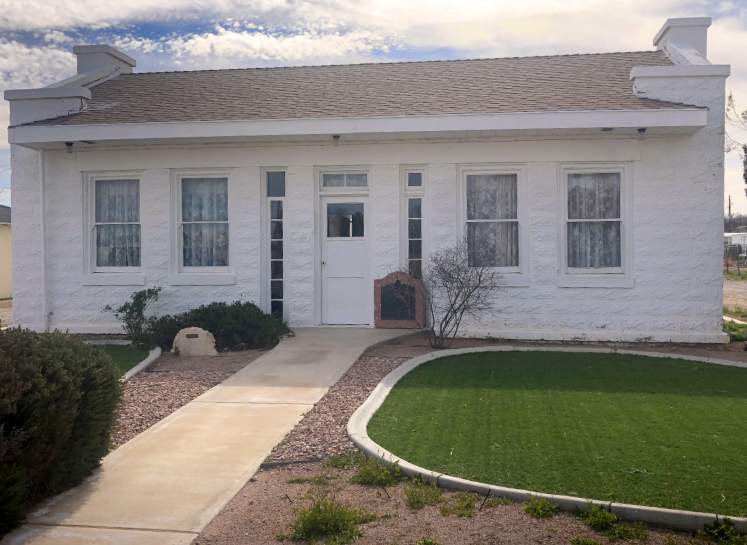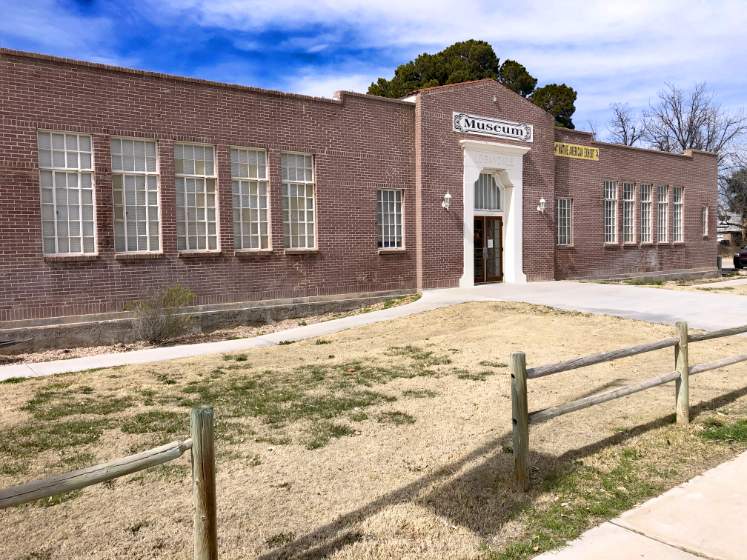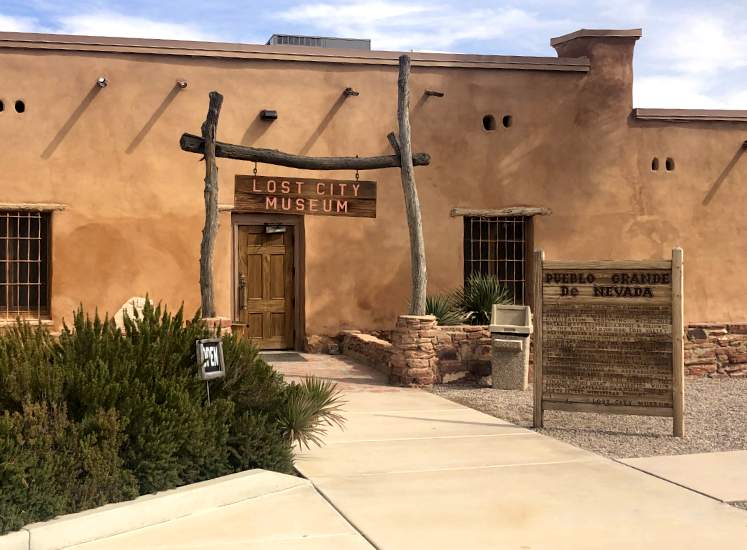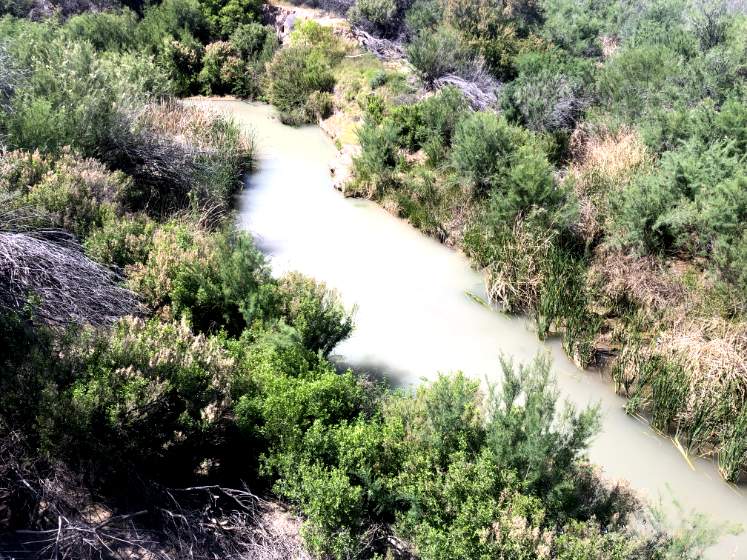
Moapa Valley

LDS Moapa Stake Office Building. Listed on the National Register of Historic Places and the Nevada State Register of Historic Places.

Logandale Elementary School. Listed on the Nevada State Register of Historic Places.

Lost City Museum. Listed on the National Register of Historic Places.

Overton Gymnasium. Listed on the National Register of Historic Places and the Nevada State Register of Historic Places.

The Muddy River.
"Rich in Pueblo-type culture, and noted by the explorer Jedediah Smith in 1826, Moapa Valley is crossed by the Old Spanish Trail.
In 1865, Brigham Young sent 75 families to settle the area, to grow cotton for the people of Utah, and to connect Utah with the Pacific Ocean via the Colorado River.
Located near the junction of the Muddy and Virgin Rivers, and now under Lake Mead, the “cotton mission” was named St. Thomas for its leader, Thomas Smith. Mormons built a prosperous, self-contained agricultural industry in the valley, which included orchards, vineyards, cotton, grains, and vegetables.
The December 1870 survey placed the valley in Nevada, which meant property owners owed back taxes to Nevada. The settlers, now including those in St. Joseph, (old) Overton, West Point, and Logandale, began leaving two months later. They abandoned the results of 7 years of labor, more than 18 miles of irrigation canal, and several hundred acres of cleared land.
Other Mormons resettled the land in 1880. The area remains one of the most agriculturally productive in the state."
(Nevada Historical Marker 36)
"In 1864 Brigham Young called for settlers to colonize the Muddy (now Moapa) Valley. On January 8, 1865, eleven men and three women arrived and began the first settlement at St. Thomas, now covered by the waters of Lake Mead. Later other settlements were made. In 1871, because of high taxes, Indian depredations, distance from markets, and other adverse conditions, some 600 people abandoned their hard-won homes. After 1880 other families came and settled the entire Moapa Valley—this time to stay."
(Daughters of Utah Pioneers Marker 275)
"During the early 1860's, Brigham Young directed that settlements be built in the area known today as the Moapa Valley. The water from the Muddy River, and the rich soil of the Valley, made the land a prime agricultural area for southern Nevada. Settlers sent by the Mormon church created the towns of St. Thomas (1865), St. Joseph (1865), Simonsville/Mill Point (1866), West Point (1868), Overton (1870), Logandale (1881), and Kaolin (1910). Early settlements thrived until 1871, when local residents found they were in Nevada, not Arizona. Moving back to Utah, they did not return for ten years. Overton, Logandale, and St. Thomas were revived, though St. Thomas, along with the later settlement of Kaolin, was ultimately drowned by the waters of Lake Mead."
(Queho Posse Chapter 1919 E Clampus Vitus)